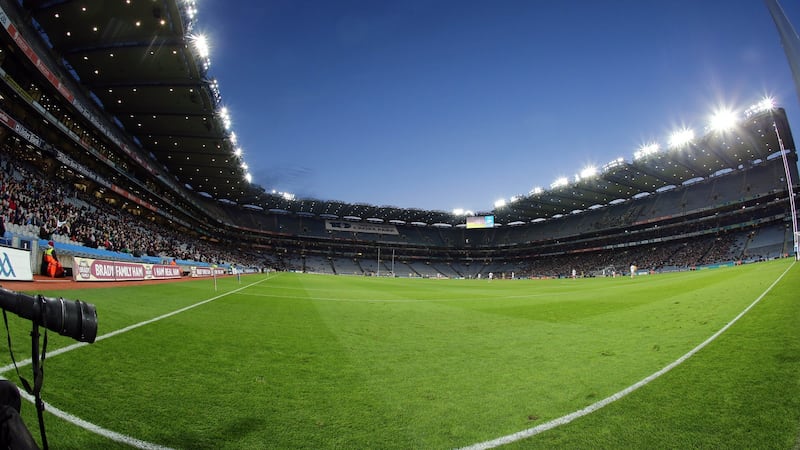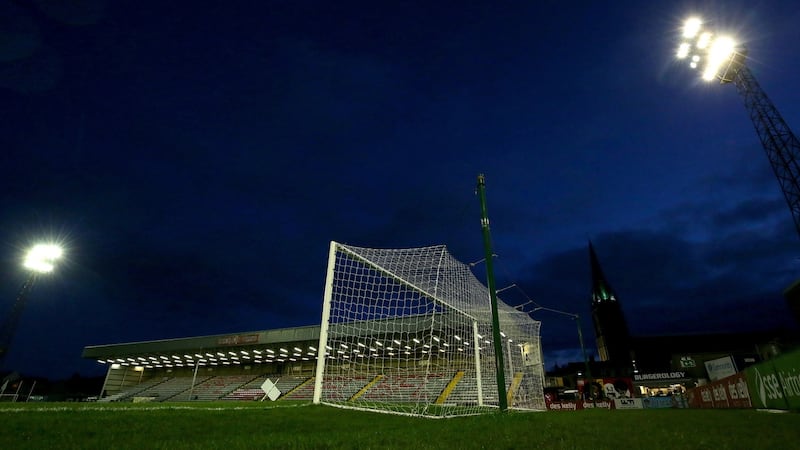Maybe you read the book. Or saw the film. Or sat through the drama series on the gogglebox. Whatever the medium, if you love your sport, and even if American Football is or was an alien sport, there can be little doubt that “Friday Night Lights” flicked a switch: it brought a raw insight into how sport can be a religion in small town America.
Thing is, where once upon a time it was the exception rather than the rule for sports clubs in Ireland to boast of having floodlit playing fields, there has been a dramatic change in the last decade with a big increase in clubs – GAA to soccer, rugby to hockey - around the country putting floodlighting at the top of their development wish lists.
Indeed, this is shown up in the most recent of the government’s Sports Capital Programme grants (November 2019) which saw no fewer than 65 projects with floodlighting as the primary objective awarded funding. In this instance, there was no rural/urban divide, as clubs the length and breadth of the country benefited from grants totaling more than €2.3 million.
"It is transforming how clubs operate, it is countrywide," acknowledged David Mulqueen of Signify (formerly Philips Lighting), an industry leader in the provision of floodlighting to the Irish market, who added: "Between getting funding, planning, waiting for planning permission and the wait for the project to arrive, it can be a long-drawn out process. Then you see the joy on people's faces when their pitch is lit for the first time and everything is justified."
Such illumination comes at a cost, to be sure, and while LED lighting – such as that which was installed at Páirc Uí Chaoimh, the first stadium in Ireland to currently feature that technology – is the more modern option, the facts and figures (especially for GAA, rugby and soccer clubs) mean that the older Metal-halide Lamp, originally developed in the 1960s, remain the go-to choice for a large number of community-based clubs.
Energy efficient
These high intensity discharge (HID) lamps, for the most part, are the ones lighting up pitches most nights of the weeks as clubs use excel spreadsheets to maximise the use of their facilities.
There is definitely a dual-technology thing going on, with the HID lights cheaper from a capital point of view but with LED lights far more energy efficient.
So, HID or LED? “There’s absolutely nothing wrong with the older technology whatsoever. In the last few years, like everything else, LED floodlighting has been introduced to the market and there are significant energy savings, there are longterm benefits, said Mulqueen. “But they are expensive. The payback on the upfront cost could be a number of years depending on how often they are used . . . however tennis, for example, is ideal for LED upgrades.
“Tennis floodlighting is used a lot more than a natural grass GAA pitch, the payback is a lot shorter on a tennis court than a natural grass rugby, soccer or GAA pitch. Tennis is the leading light at the moment for retrofitting upgrade, it is made for it.

“It is project specific, certain projects are screaming out for LED and certain projects are absolutely perfect for the older HID technology. If you are an amateur GAA club and you have a natural grass pitch, do you really need LED? That really depends on your budget available and the likely number of burning hours annually in order to determine your payback on such a capital investment. However, if you are an indoor arena or a tennis court, having the option of dimming and instantaneous light, LED is certainly the way to go,” said Mulqueen.
The fact of the matter is that many clubs around the country have prioritised getting floodlights as part of their development projects, ensuring that training sessions – and matches – can be held through those long dark winter nights, benefiting all teams, from children to adults. The advice for clubs and associations is to engage early in the process with competent specialists and do their due diligence.
Planning permission
While the decision to go with HID or LED lighting is one that clubs ultimately must make, based on their own circumstances, one part of the equation which must be adhered to is to seek planning permission for the installation of floodlights.
This necessity was highlighted in a dramatic way recently when Galway City Council issued a notice to Knocknacarra Football Club to remove temporary lighting it had installed on the grounds that appropriate planning permission and environmental assessment, due to the pitches' proximity to an area of special conservation, had to be carried out as part of an application process. The upshot was that almost 900 young players were unable to train under floodlights, while a new application (which can take months) for permanent floodlighting was made.
The advice to clubs considering floodlighting their pitches is to engage in the process step-by-step, getting a number of comparative quotations so that, when the planning comes through, typically two or three months later, there follows the next step of the company organising columns, lights cables etc and, then, finally installation. This is actually the shortish period, taking around two weeks, of the entire process.

In fairness to the Capital Sports programme, its grant funding has enable clubs around the country to find the light . . . not just on Fridays, but right through the week!
Did you know?
The €5 million floodlight programme was the final phase in the major redevelopment of Croke Park. The pitch floodlight system was designed to Fifa standards by Thorn Lighting who also supplied lighting for SuperBowl XLI in Miami. The system has the capability of different scene settings up to and above 270 foot candles horizontally and 180 foot candles vertically, which allows for HD Television demands. The stadium floodlights are powered by independent synchronous generators.
Spreading the light
A county-by-county grant funding for floodlight projects in the most recent Sports Capital Programme (November 2019):
Carlow
Carlow LTC €38,857
Co Carlow RFC €16,953
Kilbride GAA €28,618
Rathvilly GAA €14,455
Cavan
Beltrubet GAA €32,985
Kill Shamrocks GAA €26,143
Clare
Kilrush RFC €39,456
Cork
Adrigole GAA €56,273
Clonakilty RFC €75,567
Cork Colleges Camogie €62,914
Crosshaven AFC €36,629
Dolphin RFC €41,267
Milford GAA €49,344
Donegal
Lagan Harps AFC €40,022
Naomh Muire GAA €31,574
St John Bosco multi-sport €6,618
Dublin
Garda GAA/Westmanstown Gaels GAA €60,615
Malahide United AFC €43,547
Monkstown LTC €83,241
Skerries RFC €46,146
St Maur's GAA €129,206
St Patrick's Donabate GAA €110,061
St Sylvester's GAA €58,252
Templeogue LTC €53,171
Galway
Ballinasloe Town AFC €27,694
Ballymore AFC €17,357
Cortoon Shamrocks GAA €19,465
Gort GAA €64,185
Liam Mellows GAA €27,570
Kerry
Glenbeigh Glencar GAA €22,869
Kildare
Allenwood GAA €35,470
Clane GAA €89,960
Confey GAA €5,504
Edenderry RFC €24,878
Monasterevan GAA €67,947
Kilkenny
Freebooters AFC €38,887
Laois
Portlaoise GAA €46,674
Leitrim
Sean O'Heslins GAA €47,206
Limerick
Old Crescent RFC €37,976
Longford
Colmcille GAA €36,862
Fr Manning Gaels €23,273
Louth
Dundalk IT €63,031
St Kevin's GAA €52,497
Mayo
Ballyglass AFC €13,865
Meath
Blackhall Gaels GAA €38,290
Drumree GAA €36,239
Meath Hill GFC €40,411
Monaghan
Carrickmacross Emmets €24,023
Offaly
Moneygall AFC €31,299
Tullamore LTC €6,572
Sligo
St Mary's GAA €28,666
Curry GAA €30,346
Tipperary
Clonmel Hockey Club €19,732
Waterford
St Saviours AFC €43,732
Westmeath
Athlone GAA €22,923
Caulry GAA €29,576
Garrycastle €13,994
Mullingar LTC €8,489
Wexford
Ferns St Aidans GAA €47,807
Glynn Barntown GAA €33,725
Annacurra GAA €16,893
Wicklow
Bray Emmets GAA €54,421
Co Wicklow LTC €28,744
St Patrick's Kilcoole GAA €46,101
Wicklow LTC €65,334















